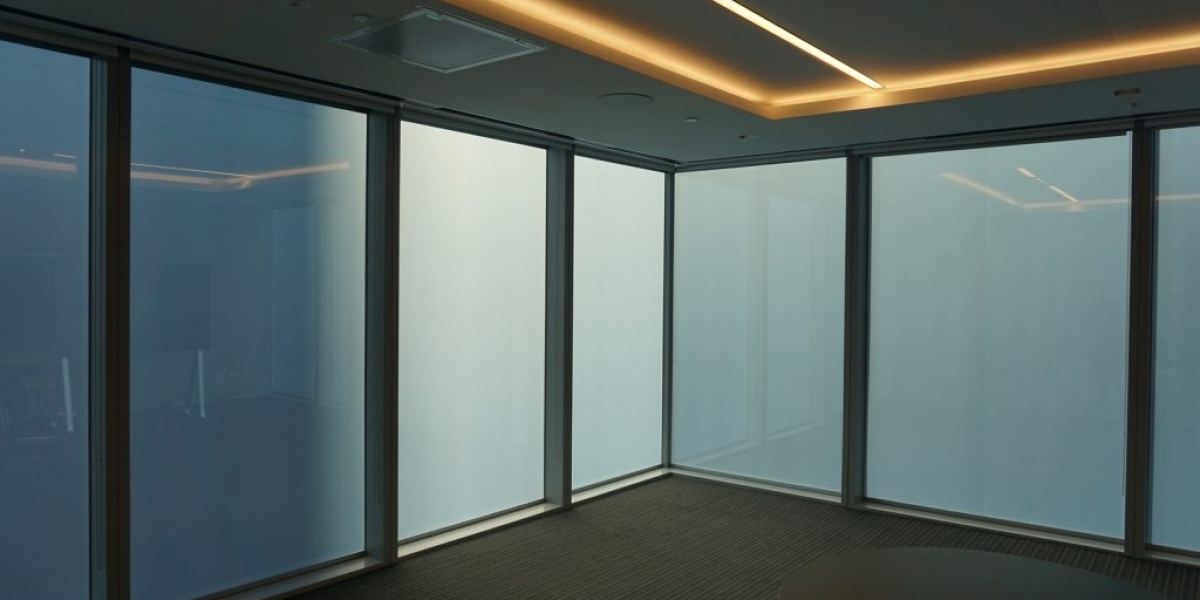Introduction to Electrochromic Glass
Electrochromic glass is a smart window technology that allows users to control the amount of light, heat and glare passing through the glass with the flip of a switch or press of a button. This is done through the use of thin film coatings on the glass that can change color and opacity when an electric voltage is applied.
How Electrochromic Glass Works
Electrochromic Glass contains a special material known as an electrochromic coating or film placed between two panes of glass. This coating contains ions of tungsten, nickel, cerium or other transitional metals that can switch between clear and colored states. Separated from this coating by an ion conductor layer is a counter electrode made of materials like silver or silver chloride. When a small low-voltage current is applied, ions in the electrochromic layer are able to travel back and forth between the coating and counter electrode, causing the material to change color and opacity. In its passive state the glass appears clear, but when activated it can gradually darken to allow more control over lighting, glare and heat transfer. Electrochromic glass switches states quickly, within just a few seconds.
Applications of Electrochromic Glass
Large smart windows with electrochromic coatings are ideal for offices, schools, hospitals and other commercial buildings where managing daylight and glare is important. It allows occupants to have views outside while still being able to darken windows at will. Electrochromic windows also help reduce energy costs by lowering the need for artificial lighting and HVAC usage. The technology is used increasingly in residential homes as well, helping homeowners save on utility bills.
Other applications include:
- Automotive - Electrochromic glass is used in rear view mirrors, sunroofs and side windows in some high-end vehicles to help reduce glare from bright headlights. It provides improved visibility and passenger comfort.
- Airplanes - Some aircraft now use electrochromic windows in cabin partitions and cockpit windshields to variable opacity on demand and reduce disruptive sunlight glare during takeoff and landing. This enhances pilot control and safety.
- Museums and art galleries - Sensitive displays can be protected from harmful UV rays and excessive light exposure by using electrochromic glass that controls natural lighting electronically rather than with blinds or shades.
Benefits of Electrochromic Glass
Beyond controllable tint and switchable opacity levels, electrochromic glass provides several other important benefits:
- Energy efficiency - By blocking heat and glare electrochromic windows reduce solar heat gain and lower HVAC costs. Studies show they can cut entire building energy use up to 20%.
- Comfort - Users have precision control over lighting and warmth levels, preventing too much sun exposure that can cause eyestrain and discomfort.
- Aesthetics - Switchable glass allows panoramic unobstructed views thanks to its seamless tinting. This enhances architectural design possibilities.
- Safety - Darkening in an instant helps protect sensitive documents, art and displays that may be light-sensitive. It's also useful in emergencies to block hazardous radiation.
- Low maintenance - Unlike curtains or blinds, electrochromic glass never needs cleaning, dusting or repairs as there are no moving parts. It's a high-durability solution.
Technical Challenges of Electrochromic Glass
While offering compelling advantages, several technical challenges still need addressed with electrochromic glass technology:
- Cost - Manufacturing electrochromic windows and coatings at large scales requires significant capital equipment and technical expertise, translating to relatively high per-pane costs compared to standard windows currently. As production increases, economies are driving down these costs however.
Get More Insights On This Topic: Electrochromic Glass








